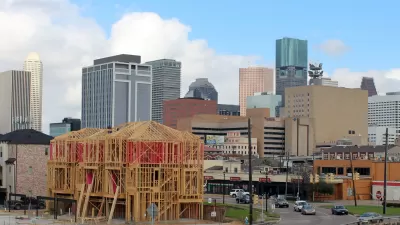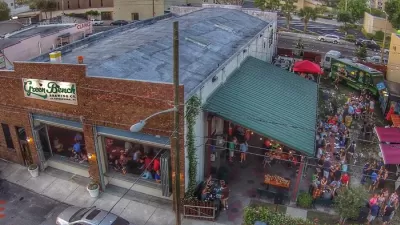In its history, Los Angeles has made four fateful planning decisions, in the opinion of real estate consultant and developer Michael P. Russell, but much can be learned from these mistakes.
Los Angeles has, as other cities have, made many planning mistakes over its history. However, four of these mistakes distinguish it from the pack, according to Los Angeles real estate developer and advisor, Michael P. Russell:
1) Siting the City Inland: "It started with the founding of the city. Every other world-class city is located on a body of water—an ocean or a river. If an ocean or sea is near by, a city usually is located on the water. This did not happen in the case of Los Angeles."
2) Rejecting the Olmsted Recommendations. "In 1930, the firm started by the sons of the great landscape architect Frederick Law Olmsted, designer of Central Park in New York in addition to other projects, proposed a comprehensive and coherent network of parks, playgrounds, schools, beaches, forests, and transportation to promote the social, economic, and environmental vitality of Los Angeles and the health of its people. . . . Instead, civic leaders killed the Report because of politics, the bureaucracy and private landowner greed."
3) Channelization of the Los Angeles River: The "48 mile “river” was turned into a concrete channel from Simi Valley to Long Beach."
4) Leaving the Park out of South Park: "In 1970, the Central City Association of Los Angeles retained Wallace McHarg Roberts and Todd to prepare a General Development Plan for downtown Los Angeles that . . . called for a 25-acre park—South Park—two blocks east of what is now Staples Center. . . . However, true to form, the City and the LA Redevelopment Agency did not implement the Wallace McHarg Roberts and Todd plan. Thus, there was 'no park in the South Park' area."
Mr. Russell concludes "[w]hat are the lessons learned from these swing and misses? (1) Planning and land use issues are important and our decisions or lack thereof live on for a long time. (2) As communities, we must have a clear vision and act boldly. (3) We need to put a leader in charge of implementing the bold vision. (4) The leader must be given the authority to implement the vision. (5) We need to give the person in charge the financial and other necessary resources to implement the vision in a timely manner. (6) If we create an environment where the vision is being implemented in a timely manner, the private and non-profit sectors will join the parade."
FULL STORY: Swung on and Missed

Alabama: Trump Terminates Settlements for Black Communities Harmed By Raw Sewage
Trump deemed the landmark civil rights agreement “illegal DEI and environmental justice policy.”

Planetizen Federal Action Tracker
A weekly monitor of how Trump’s orders and actions are impacting planners and planning in America.

Why Should We Subsidize Public Transportation?
Many public transit agencies face financial stress due to rising costs, declining fare revenue, and declining subsidies. Transit advocates must provide a strong business case for increasing public transit funding.

Understanding Road Diets
An explainer from Momentum highlights the advantages of reducing vehicle lanes in favor of more bike, transit, and pedestrian infrastructure.

New California Law Regulates Warehouse Pollution
A new law tightens building and emissions regulations for large distribution warehouses to mitigate air pollution and traffic in surrounding communities.

Phoenix Announces Opening Date for Light Rail Extension
The South Central extension will connect South Phoenix to downtown and other major hubs starting on June 7.
Urban Design for Planners 1: Software Tools
This six-course series explores essential urban design concepts using open source software and equips planners with the tools they need to participate fully in the urban design process.
Planning for Universal Design
Learn the tools for implementing Universal Design in planning regulations.
Caltrans
Smith Gee Studio
Institute for Housing and Urban Development Studies (IHS)
City of Grandview
Harvard GSD Executive Education
Toledo-Lucas County Plan Commissions
Salt Lake City
NYU Wagner Graduate School of Public Service




























